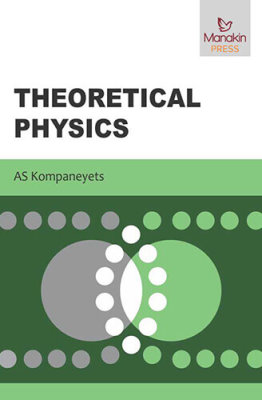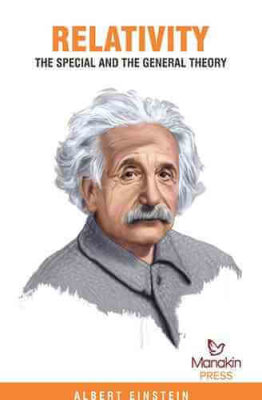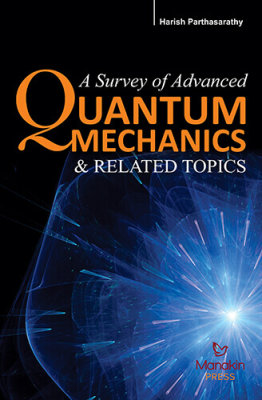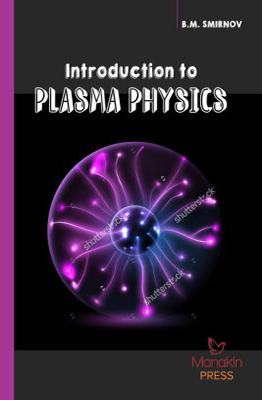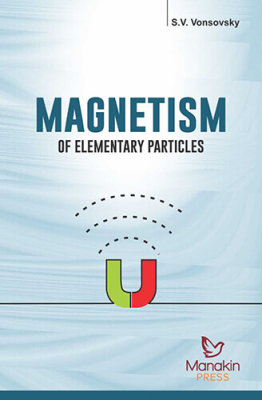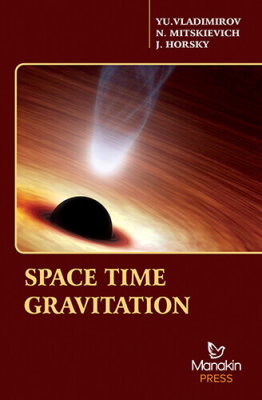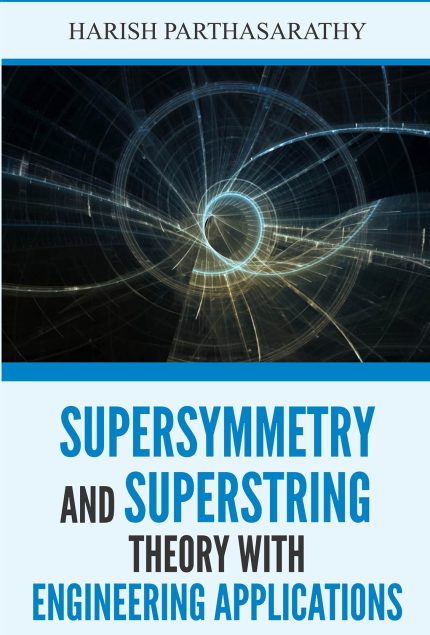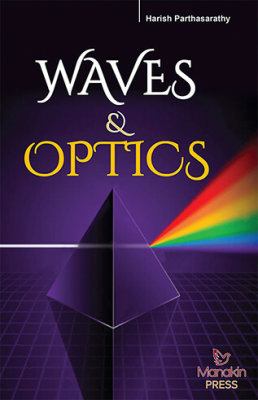Relativity: The Special and The General Theory
₹595.00
Albert Einstein | Category: Physics
Binding Type: Hard Binding
Book Details
ISBN: 9789386221339
YOP: 2018
Pages: 178
Order also on
World-renowned theoretical physicist Albert Einstein was highly interested in enlightening the theory of Relativity to people who were not particularly well-versed in higher mathematic concepts and theoretical physics. His answer to this was to write the groundbreaking work, “Relativity: The Special and General Theory.” In the paper, Einstein lays out two contradictory principles: a principle of relativity and a principle of light. Einstein proposed that, rather than discarding these two principles for being conflicting, the rules of time and space should be completely revamped and rethought in order to find a way to make these two principles work in synchronization. Rather than just explaining his new proposal, though, Einstein writes exactly why these rules need to be altered by explaining the inaccuracies and inadequacies located within each of the current theories. Albert Einstein is best known for his work on the theory of Relativity, gaining him the title of “Father of Modern Physics.” He also received the 1921 Nobel Prize in Physics, and his work is attributed as an inspiration for the quantum theory within the field of physics.
PART I- THE SPECIAL THEORY OF RELATIVITY
1. Physical Meaning of Geometrical Propositions
2. The System of Co-ordinates
3. Space and Time in Classical Mechanics
4. The Galileian System of Co-ordinates
5. The Principle of Relativity (In the Restricted Sense)
6. The Theorem of the Addition of Velocities Employed in Classical Mechanics
7. The Apparent Incompatibility of the Law of Propagation of Light with the Principle of Relativity
8. On the Idea of Time in Physics
9. The Relativity of Simultaneity
10. On the Relativity of the Conception of Distance
11. The Lorentz Transformation
12. The Behaviour of Measuring-Rods and Clocks in Motion
13. Theorem of the Addition of Velocities. The Experiment of Fizeau
14. The Heuristic Value of the Theory of Relativity
15. General Results of the Theory
16. Experience and the Special Theory of Relativity
17. Minkowski’s Four-Dimensional Space
PART II- THE GENERAL THEORY OF RELATIVITY
18. Special and General Principle of Relativity
19. The Gravitational Field
20. The Equality of Inertial and Gravitational Mass as an Argument for the General Postulate of Relativity
21. In What Respects Are the Foundations of Classical Mechanics and of the Special Theory of Relativity Unsatisfactory?
22. A Few Inferences from the General Principle of Relativity
23. Behaviour of Clocks and Measuring-Rods on a Rotating Body of Reference
24. Euclidean and Non-Euclidean Continuum
25. Gaussian Co-ordinates
26. The Space-Time Continuum of the Special Theory of Relativity Considered as a Euclidean Continuum
27. The Space-Time Continuum of the General Theory of Relativity Is Not a Euclidean Continuum
28. Exact Formulation of the General Principle of Relativity
29. The Solution of the Problem of Gravitation on the Basis of the General Principle of Relativity
PART III- CONSIDERATIONS ON THE UNIVERSE AS A WHOLE
30. Cosmological Difficulties of Newton’s Theory
31. The Possibility of a “Finite” and Yet “Unbounded” Universe
32. The Structure of Space According to the General Theory of Relativity
APPENDIXES
1. Simple Derivation of the Lorentz Transformation
2. Minkowski’s Four-Dimensional Space (“World”)
3. The Experimental Confirmation of the General Theory of Relativity
World-renowned theoretical physicist Albert Einstein was highly interested in enlightening the theory of Relativity to people who were not particularly well-versed in higher mathematic concepts and theoretical physics. His answer to this was to write the groundbreaking work, “Relativity: The Special and General Theory.” In the paper, Einstein lays out two contradictory principles: a principle of relativity and a principle of light. Einstein proposed that, rather than discarding these two principles for being conflicting, the rules of time and space should be completely revamped and rethought in order to find a way to make these two principles work in synchronization. Rather than just explaining his new proposal, though, Einstein writes exactly why these rules need to be altered by explaining the inaccuracies and inadequacies located within each of the current theories. Albert Einstein is best known for his work on the theory of Relativity, gaining him the title of “Father of Modern Physics.” He also received the 1921 Nobel Prize in Physics, and his work is attributed as an inspiration for the quantum theory within the field of physics.
PART I- THE SPECIAL THEORY OF RELATIVITY
1. Physical Meaning of Geometrical Propositions
2. The System of Co-ordinates
3. Space and Time in Classical Mechanics
4. The Galileian System of Co-ordinates
5. The Principle of Relativity (In the Restricted Sense)
6. The Theorem of the Addition of Velocities Employed in Classical Mechanics
7. The Apparent Incompatibility of the Law of Propagation of Light with the Principle of Relativity
8. On the Idea of Time in Physics
9. The Relativity of Simultaneity
10. On the Relativity of the Conception of Distance
11. The Lorentz Transformation
12. The Behaviour of Measuring-Rods and Clocks in Motion
13. Theorem of the Addition of Velocities. The Experiment of Fizeau
14. The Heuristic Value of the Theory of Relativity
15. General Results of the Theory
16. Experience and the Special Theory of Relativity
17. Minkowski’s Four-Dimensional Space
PART II- THE GENERAL THEORY OF RELATIVITY
18. Special and General Principle of Relativity
19. The Gravitational Field
20. The Equality of Inertial and Gravitational Mass as an Argument for the General Postulate of Relativity
21. In What Respects Are the Foundations of Classical Mechanics and of the Special Theory of Relativity Unsatisfactory?
22. A Few Inferences from the General Principle of Relativity
23. Behaviour of Clocks and Measuring-Rods on a Rotating Body of Reference
24. Euclidean and Non-Euclidean Continuum
25. Gaussian Co-ordinates
26. The Space-Time Continuum of the Special Theory of Relativity Considered as a Euclidean Continuum
27. The Space-Time Continuum of the General Theory of Relativity Is Not a Euclidean Continuum
28. Exact Formulation of the General Principle of Relativity
29. The Solution of the Problem of Gravitation on the Basis of the General Principle of Relativity
PART III- CONSIDERATIONS ON THE UNIVERSE AS A WHOLE
30. Cosmological Difficulties of Newton’s Theory
31. The Possibility of a “Finite” and Yet “Unbounded” Universe
32. The Structure of Space According to the General Theory of Relativity
APPENDIXES
1. Simple Derivation of the Lorentz Transformation
2. Minkowski’s Four-Dimensional Space (“World”)
3. The Experimental Confirmation of the General Theory of Relativity
| Weight | 0.365 kg |
|---|---|
| Dimensions | 22.2 × 14.7 × 1.7 cm |
| yop |
2018 |
| subject-category |
Physics |
| isbn |
9789386221339 |
Related products
